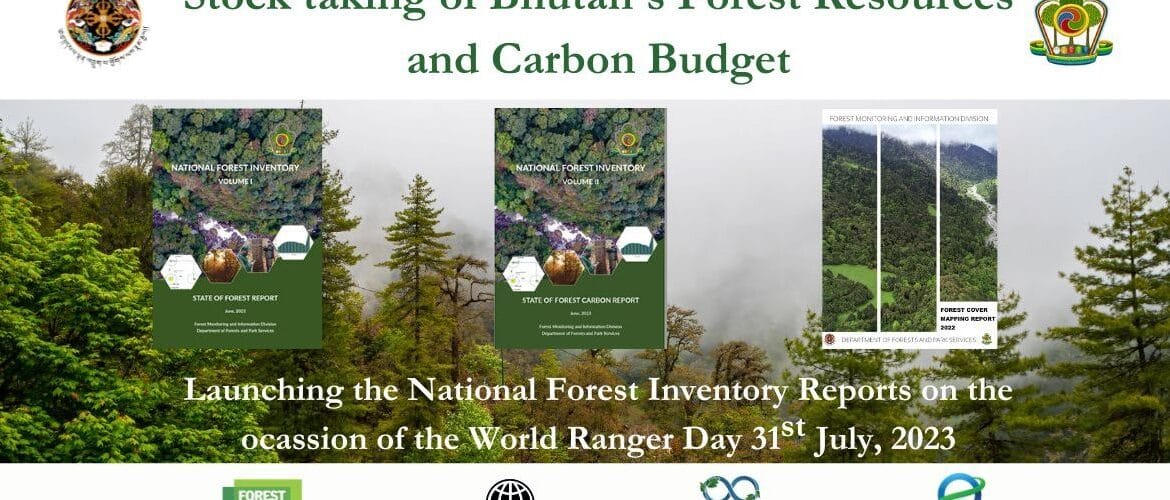The Department of Forests and Park Services has conducted ground-based forest inventory from 2021-2022, the result of which was analysed in two volumes in 2022-2023;
i. National Forest Inventory volume I: State of Forest Report
ii. National Forest Inventory Volume II: State of Forest Carbon Report.
The main finding of the reports is:
- The forest cover estimated for the year 2022 is 69.71%. The forest cover has decreased by 1.29% from 71% reported in 2016. The Department also conducted a parallel exercise and mapped forest cover using Landsat satellite imageries (GIS &RS) for the year 2022, which also reported a similar forest cover with 69.7%.
- The total growing stock of forest is estimated at 759 million m3. The total growing stock has decreased by 19.6 % from 2016 (944 million m3). The results show that the 65% of the growing stock are contributed by the broadleaved forest, while 35 % of the total growing stock is coniferous forest.
- The total annual BAI in last five years in forest is 1.22 million m2 for the entire forest. The periodic annual basal area increment is 0.46 m2 ha-1 yr-1 in Forest. However, the BAI in Forest has decreased from 0.48 m2 ha-1 yr-1 reported in the 1st NFI.
- Total carbon stock of forest is estimated at 523 million tonnes. Broadleaved Forest contributed 66% of carbon stock while the coniferous forest contributed 34% of carbon stock. Further, the distribution of growing stock and carbon stock is skewed towards smaller diameter class trees
- 72 % of the estimated number of trees are smaller trees with a Diameter at Breast Height (DBH) between 10 cm to 30 cm. The maximum DBH recorded during this NFI is 260 cm Cupressus corneyana (Tsenden shing) under Kazhi Gewog
- The total carbon sequestration potential of forests is 11 million tonnes of CO2 per annum in the form of aboveground biomass accumulation. There is an increase of 1.6 million tonnes of CO2 per year from 9.4 million tonnes of CO2 per year in 2015. However, this estimate does not include carbon emission from forest such as deforestation, timber harvesting, forest fires and firewood collection; and emission from other sectors such as energy and transport, industries, waste and agriculture and livestock.
- Broadleaved forest sequesters (4.4 tCO2 yr-1) more carbon than the coniferous forest (3. tCO2 yr-1)
The NFI, in addition to the traditional forest parameters like volume, basal area and other tree component, also collected basic information on species diversity, forest health and disturbances, NWFP and wildlife. The information collected shall guide the planning and implementation of Forest management activities, towards fulfilling the long term goals of the Sustainable Development.

